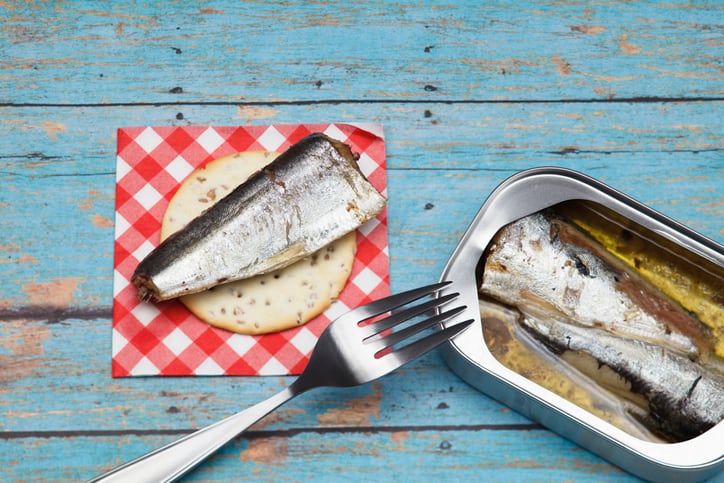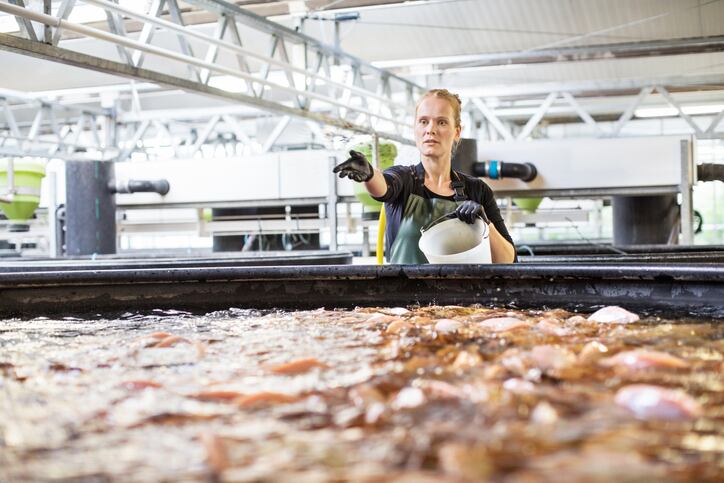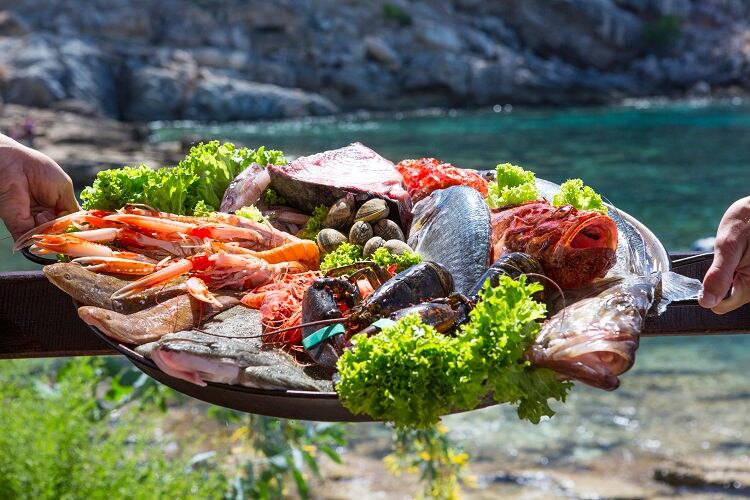The Good Fish Guide is a traffic-light guide to seafood sustainability in the UK used by consumers, restaurants, supermarkets and suppliers.
It shows consumers and businesses which seafood options are the most sustainable by using a simple traffic light system. Green is the Best Choice, amber is OK to eat but improvements are needed, and red indicates Fish to Avoid.
The list rates seafood that is sold, fished or farmed in the UK and has over 650 ratings for 120 different species.
Unsustainable seafood is one of the biggest threats to seas, according to the MCS, which said the guide aims to drive the market towards responsible sourcing of sustainable seafood. At least 20% of the seafood sold in the UK is from businesses that use the GFC to guide sourcing decisions.
A key change in the updated guide sees herring and sardines join the Best Choice list.
There had been concerns about herring from the North Sea, as populations had been in decline since 2017. However, this seems to be slowing down, the MCS said, and the latest science shows that the population is a healthy size.
Sardines caught off the south and southwest coasts of the UK have also joined the Best Choice list due to new science showing healthy population levels.
A recent survey from the Marine Conservation Society found that 62% of Brits frequently buy tinned or jarred seafood. The latest Good Fish Guide ratings show improvements in the sustainability credentials of some of the nation’s favourite tinned fish.
Jack Clarke, Sustainable Seafood Advocate said: “Tinned fish, if caught or farmed sustainably, can make a great sustainable meal choice. It’s affordable, keeps for a long time and really delivers on flavour. Tinned fish is incredibly versatile too, adding depth and umami to countless dishes, making a great store cupboard staple.”
Some monkfish numbers have declined
More species have joined the Good Fish Guide’s Fish to Avoid list, including some sources of skates, rays and monkfish.
A restaurant favourite, monkfish, caught in the North Sea and west of Scotland, has moved from amber onto the Fish to Avoid list. Monkfish numbers in this area have declined from a peak in 2017 to the lowest since 2013, said the MCS. Monkfish isn’t completely ‘off the menu’, it added, however. In contrast, monkfish populations in the southwest UK are among the biggest on record. If Celtic Sea monkfish isn’t available, it can easily be replaced in recipes for a more sustainable firm white fish such as hake.
Ratings for various skates and rays remain on the Fish to Avoid list due to low population numbers. There are no green rated options for any skates or rays, and only a few amber rated options, so check the Good Fish Guide carefully before buying. Skates and rays are vulnerable to overfishing. Fishing controls need a lot of improvement to make sure these species are properly protected from overexploitation.
Brown crab and lobster were also reviewed with this update to the Guide, with most ratings needing improvement and some joining the Fish to Avoid list. Population levels were found to be suffering across the board, largely due to poor management, with no catch limits in place. There is also a risk of whale entanglement in the ropes attached to pots on the Scottish west coast, but more data on the frequency and whereabouts of these incidents is needed. The only Best Choice options are Shetland brown crab and Jersey lobster, both of which are MSC-certified.
Tuna, one of the nation’s favourite tinned fish, was reviewed in this ratings update, with largely no changes. Tuna has mixed ratings depending on where and how it is caught. Generally, said the MCS, the best options are albacore and skipjack caught by pole & line or troll.
Charlotte Coombes, Good Gish Guide Manager said: “It’s great to see some key UK species joining the Best Choice list with this update to the Guide, including some firm favourites. With 141 Best Choice seafood options there’s plenty to choose from to support sustainable fisheries. Disappointingly, all of the new UK ratings to the guide are either amber or red rated, with a total of 161 Fish to Avoid.”
‘Anti-fishing’
But Scottish Seafood Association Chief Executive Jimmy Buchan hit out at the updated guide and accused the organisation of misinforming consumers and putting jobs at risk.
He said monkfish numbers in Scotland have ‘never been so abundant’, adding the MCS is not willing to fully share its findings “which brings their credibility into question”.
Regarding the MCS’s recommendations not to buy crab and lobster because of alleged concerns about whales becoming entangled in gear, he said “there is very little evidence of this being a significant problem and where risks have been identified the industry is working collaboratively to minimise any impact.”




